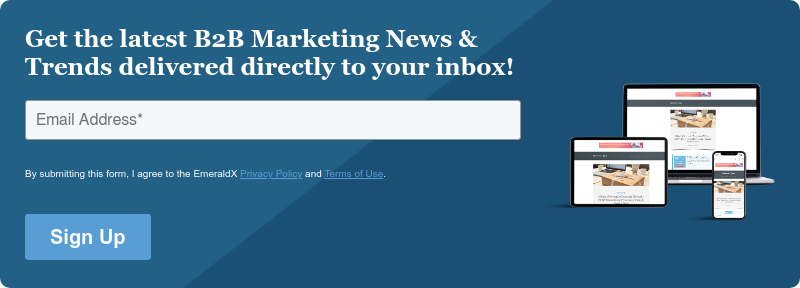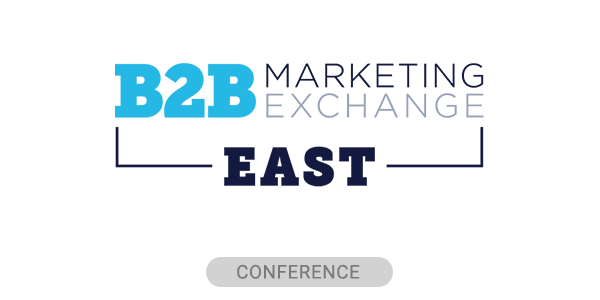In August, I made a bold prediction: traditional advertising, as we know it, will be dead by 2030. This seems to have kickstarted a wider discussion around the future of advertising in 2030 and beyond— particularly when it comes to how the playbooks are being rewritten.
For B2C, experts expect that the future will be defined by changing consumer behaviors, technology like artificial intelligence (AI), and the disruption of the agency model. For B2B marketers, the future is being rewritten by today’s modern buyer who has outgrown and evolved from ‘traditional’ advertising strategies and now demand information on their own terms and timeline.
The old model is broken, and it’s been replaced with a more intelligent, data-driven approach. To understand how we got here, it’s important to fully understand today’s modern buyer particularly now that we are seeing a generational shift with more than two-thirds of today’s B2B buyers are Millennials or Gen Z.
Profiling Today’s Winners
Today’s buyer dictates where, when, and how they consume content, leaving traditional approaches— broad campaigns, generic messaging, and static impressions— falling short. To earn attention and influence decisions, marketers must rethink not just what they communicate, but how and where they deliver it.
The winners today embrace a more intelligent, data-driven approach: understanding buyers’ behaviors, providing personalized experiences across the channels they already use, and measuring success in terms of meaningful business outcomes rather than just reach.
Driving Performance with Data
New research released today from Madison Logic and The Harris Poll shows how dramatically B2B marketing strategies are evolving. More than four in five marketing decision-makers (84%) say their organizations are moving beyond simply “capturing eyeballs” toward approaches grounded in performance.
This shift means leaning into account-level intelligence, activating campaigns across multiple touchpoints, and measuring progress against pipeline and revenue— not just clicks.
Instead of running broad campaigns aimed at general awareness, marketers are using intent data and firmographic insights to identify in-market accounts and understand the buying group dynamics driving decisions. They surround key stakeholders with tailored creative across digital, connected TV (CTV) and audio, aligning messaging to specific buying stages. And rather than waiting until campaigns conclude, they use closed-loop reporting to show exactly how efforts drive revenue, while optimizing midflight to maximize ROI.
A More Diversified Multi-Channel Approach
Heightened accountability is driving marketers to expand into new channels and orchestrate multi-touch campaigns. Nine in ten marketers (90%) report exploring new formats—such as podcasts, CTV, and social—to engage buyers wherever they are. These channels not only diversify engagement strategies but also accelerate the path to revenue.
Success requires thoughtful orchestration. Messages are embedded into buyers’ routines: thought-leadership audio for early awareness, short-form CTV ads to reinforce value mid-funnel, and retargeted digital campaigns to nudge prospects closer to purchase.
Each piece is tailored to context but aligned to a unified account-level story, ensuring buyers encounter a consistent experience across touchpoints. Performance is monitored in real time, allowing marketers to shift spend to the right mix of channels and placements that deliver the highest engagement and business impact.
AI as the Creative Engine
Technology is only amplifying this transformation. Nearly three in four marketing decision-makers (73%) believe AI-powered creative will define the future of advertising by 2030, and 85% are already investing in AI and machine learning to lead the change.
AI is enabling marketers to personalize at scale, at a rate otherwise thought impossible. Predictive models identify which messages and formats resonate with specific personas, while AI generates and tests creative variations in real time. This allows dynamic tailoring of ad copy, imagery, and audio scripts based on account, industry, or buying stage signals—creating a consistent, unified experience that adapts to buyer needs.
The impact is already reshaping expectations. Two in three marketers (66%) anticipate that personalization at scale and immersive experiences will dominate in the years ahead, while 60% expect influencer and micro-influencer collaborations to rise in importance. AI is central to both shifts: powering the dynamic personalization that makes large-scale customization possible and analyzing engagement data to identify the voices and advocates most likely to amplify brand messages.
By combining AI-driven personalization with data-informed influencer strategies, marketers can ensure every touchpoint is relevant, measurable, and tied directly to outcomes. The result is a cycle of continuous learning and refinement—where advertising becomes not only more creative, but also more accountable and effective.
Where Impact Meets Innovation
The takeaway is clear: the future of marketing and advertising needs to be smarter, more personalized, and more accountable to keep up with buyer expectations. The shift from traditional metrics isn’t just about new channels—it’s about recognizing and understanding how modern buyers dictate their own experiences. Marketers who learn to educate and entertain by embedding messages naturally into those targeted experiences, rather than disrupting them, will find more buyers who want to engage.
With 96% of marketers agreeing that strategies must continually adapt to evolving platforms and preferences, one conclusion stands out: the industry is moving from impressions to impact.
The next era of B2B advertising won’t be measured in eyeballs—it will be measured in outcomes, driven by AI, multi-channel orchestration, and buyer-centric approaches.
 As Chief Executive Officer at Madison Logic, Keith Turco leads all business initiatives that further establish the company as a leading global account-based marketing solution that empowers revenue-driven marketers to accelerate the buying journey with more targeted, measurable, and effective strategies. Keith’s experience driving corporate growth with expertise in business strategy, marketing technologies, and advertising spans three decades. Prior to Madison Logic, Keith served as Chief Growth Officer at MERGE, where he led double-digit new business growth, and as Chief Commercial Officer & President, Americas of EVRYTHNG, Inc., where he was instrumental in driving global strategy and accelerating growth before its sale to Digimarc Corporation. He also served as EVP, Worldwide Managing Director of Ogilvy, where he was a member of Ogilvy’s Global Leadership Team; President/CEO of gyro NY, a global B2B agency network with 15 worldwide offices, that was acquired by Dentsu; and SVP, Head of Global Corporate Marketing of CA Technologies (now Broadcom).
As Chief Executive Officer at Madison Logic, Keith Turco leads all business initiatives that further establish the company as a leading global account-based marketing solution that empowers revenue-driven marketers to accelerate the buying journey with more targeted, measurable, and effective strategies. Keith’s experience driving corporate growth with expertise in business strategy, marketing technologies, and advertising spans three decades. Prior to Madison Logic, Keith served as Chief Growth Officer at MERGE, where he led double-digit new business growth, and as Chief Commercial Officer & President, Americas of EVRYTHNG, Inc., where he was instrumental in driving global strategy and accelerating growth before its sale to Digimarc Corporation. He also served as EVP, Worldwide Managing Director of Ogilvy, where he was a member of Ogilvy’s Global Leadership Team; President/CEO of gyro NY, a global B2B agency network with 15 worldwide offices, that was acquired by Dentsu; and SVP, Head of Global Corporate Marketing of CA Technologies (now Broadcom).







